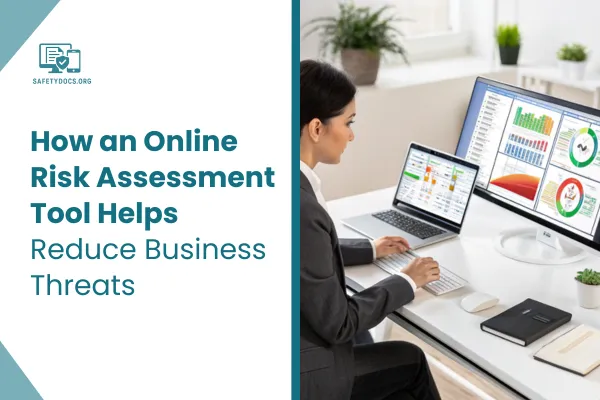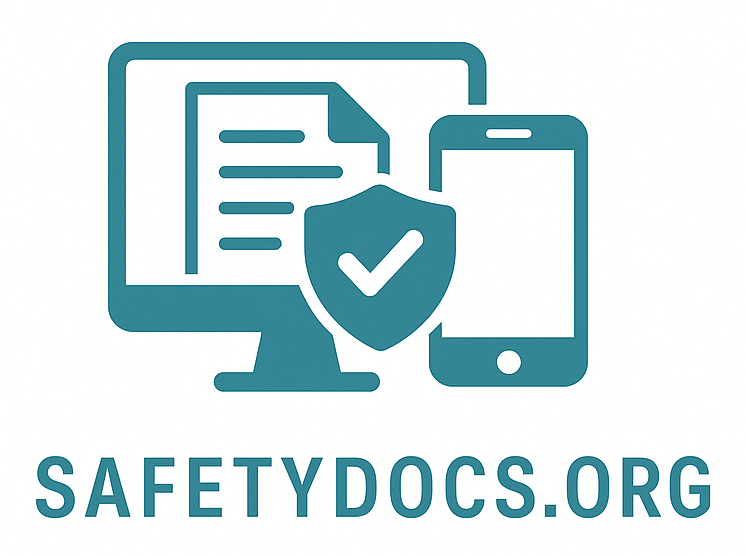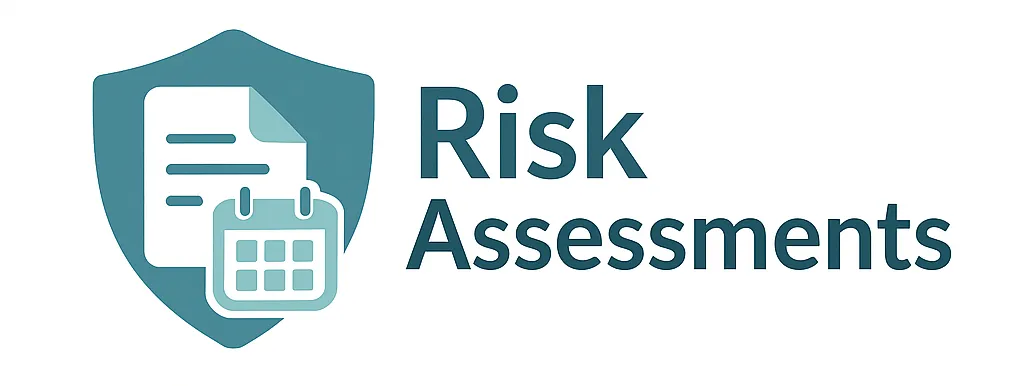
Online Risk Assessment Tool for Businesses
How an Online Risk Assessment Tool Helps Reduce Business Threats
Running a business involves more than selling products or managing employees. There are constant threats that can affect your operations, finances, or reputation. An online risk assessment tool is one way to deal with these threats before they turn into major problems. It gives companies the ability to spot risks early, take the right steps, and avoid expensive damage.
Understanding the Role of Online Risk Assessment Tools
An online risk assessment tool is a web-based system that helps businesses find, measure, and deal with different types of risks. These tools are used to collect data, analyze it, and show what needs attention. Unlike paper-based assessments, online tools are easier to manage and update.
The tool works by allowing users to enter details about their work environment, processes, or policies. Based on this input, the tool identifies areas that may cause harm or result in losses. It then gives suggestions to reduce or remove those risks. Many companies use such tools to stay compliant with laws and to maintain safer workplaces.
This approach saves time, cuts down on paperwork, and creates a central place to store all risk-related data. It also allows real-time access, which helps managers take action faster.
Why Every Business Needs Risk Assessment
Ignoring risks can lead to serious outcomes. From employee injuries to data breaches or damaged property, the results can be costly. A risk that is not identified early may grow and lead to lawsuits, fines, or even shutdowns. This is why regular risk checks are needed in every industry.
By using an online risk assessment tool, a company can identify weak points in its system. These might include gaps in safety, unsecured software, or unsafe practices by workers. Once these areas are flagged, managers can take quick and clear steps to fix them.
This not only improves the safety of the workplace but also protects the company from losses. Businesses that perform regular risk assessments often see fewer incidents, better staff morale, and improved productivity.
Important Features to Look For
When picking a tool, it's important to know what features will help your business most. A basic online risk assessment tool should allow you to record hazards, rate how serious they are, and add control measures.
Some tools offer advanced features, such as automatic alerts, scoring systems, and report sharing. Others provide options to link with your other systems like HR or IT software. Some allow mobile access so that risk data can be entered from any location, even in the field.
The key is to choose a tool that matches your team’s size and the type of risks you face. For example, a factory might need a tool that tracks equipment and chemicals, while a retail store may focus more on customer safety and theft.
Benefits for Decision-Makers
Business decisions should be based on facts, not guesses. That’s where an online risk assessment tool can help. These tools provide clear, organized reports that show what needs urgent attention and what can wait.
When managers have access to detailed risk reports, they can make better use of their budgets. They can plan staff training, maintenance, or upgrades with a clear picture of which actions will bring results.
For example, if the tool finds that most injuries happen near certain machines, the company can add safety guards or improve signage in that area. If the tool shows that workers lack safety knowledge, the business can arrange a training session.
These are direct, practical steps that save money and protect people at the same time.
Industries That Gain the Most
While all businesses can benefit, some industries have higher levels of risk and need frequent checks. The most common examples include:
Construction: Sites often have heavy machinery, working at height, and moving vehicles. Risk tools help track hazards like falls, equipment failure, and unsafe practices.
Healthcare: Hospitals and clinics use these tools to manage risks such as infection control, staff injury, and patient safety.
Manufacturing: Factories use them to track machine safety, exposure to chemicals, and fire risks.
Finance and IT: These sectors focus more on data risk, fraud, and system failure. The tool can help spot weak passwords, outdated software, or gaps in access control.
Retail and Hospitality: Shops, restaurants, and hotels must manage customer safety, food safety, and theft. Risk assessment tools allow them to monitor all these factors and more.
Why Manual Assessments Fall Short
Manual risk assessments can be time-consuming and hard to manage. They often depend on paper forms or spreadsheets, which are easy to lose or forget. Updates are slow, and reports may not be shared across teams.
Online risk assessment tools fix these problems by offering faster input, automated scoring, and real-time sharing. Everyone involved can view updates instantly. The tool stores all records in one place, making it easier to show compliance during audits or reviews.
With manual methods, risks can be missed. With a digital tool, each step is structured and less likely to be skipped.
Common Mistakes and How to Avoid Them
Even with the right tool, a poor approach can cause issues. Some businesses do not use the tool regularly or fail to act on its results. Others may rely only on checklists and ignore the feedback from staff.
To avoid these mistakes, make sure your team is trained in how to use the tool. Assign roles so that someone is always responsible for updating records. Follow up on risks identified and track whether solutions have been effective.
Avoid skipping any steps, and always use the most recent data when doing your assessments.
Picking the Right Tool for Your Needs
There are many tools available, and each has different strengths. Some are made for small teams, others for large operations. Some are made for a specific industry, while others work across many sectors.
When choosing, consider the size of your team, the type of risks you face, and your budget. Look for a tool that offers support, training, and updates. A user-friendly design will make it easier for your team to use it every day.
It also helps to choose a tool that can grow with your business. Some tools offer paid upgrades as your needs increase. If your team is mobile or works in multiple locations, choose one that supports cloud access and works well on phones or tablets.
Getting Employees Involved
An online risk assessment tool is most useful when the whole team takes part. Encourage workers to report hazards and share concerns. Many tools allow quick entries so staff can report issues in real time.
Involving your staff leads to better results because they are often the first to spot problems. This builds a safer work culture and helps you fix problems faster.
Companies that include staff in risk planning usually see more engagement, fewer missed hazards, and better long-term results.
Legal and Regulatory Support
Laws in many countries now require businesses to perform risk assessments. These include health and safety rules, labor laws, and data protection standards.
An online tool helps you stay compliant by keeping clear records of each step taken. If an inspector or auditor visits, you can show that your company takes risk seriously.
For global companies, online tools can also be set up to follow international standards, such as ISO guidelines. This gives added protection and shows your commitment to safe business practices.
Thinking About Cost and Value
Some business owners may worry about cost, but most online tools are affordable. Many offer free trials or low-cost versions with core features. When compared to the cost of one serious accident, the tool pays for itself.
For small companies, even basic tools offer major benefits. They allow quick checks, real-time updates, and easy record keeping. For large companies, more advanced versions can handle multiple locations and teams.
Either way, the return on investment is high because the tool helps prevent losses, protect people, and avoid fines.
Case Study Examples
A large retail company started using an online risk assessment tool across all its stores. Within six months, it reported a 30% drop in reported safety incidents. This was credited to better visibility and faster response to issues.
A mid-sized factory introduced the tool in its maintenance process. Over a year, it identified more than 25 issues that could have led to accidents. All were corrected before any incident occurred. The company also saved money by avoiding downtime.
A healthcare provider used the tool to monitor patient safety protocols. This allowed it to pass health audits with no problems and gain certifications that helped attract new clients.
FAQs
1. What is the purpose of a digital safety evaluation tool?
It helps businesses spot hazards early and take action before they cause harm or losses.
2. Who should use a web-based risk checking system?
Any company, large or small, can use it to improve safety and meet legal standards.
3. How often should assessments be done using these tools?
Most experts suggest doing them regularly—monthly, quarterly, or after major changes.
4. Are these tools useful for small businesses too?
Yes, even small teams benefit by reducing accidents and organizing safety tasks better.
5. Can employees access the system to report issues?
Many tools allow team members to submit concerns directly through mobile or desktop.
Conclusion
Every company, no matter how big or small, deals with risk. Using an online risk assessment tool is a smart and practical way to reduce those risks. It makes the process faster, more accurate, and easier to manage.
From safety to security, it covers all areas and helps businesses stay prepared. If you're serious about protecting your staff, assets, and reputation, this tool is worth the time and investment.
Start using an online risk assessment tool now to keep your business safer and better prepared for the future.

